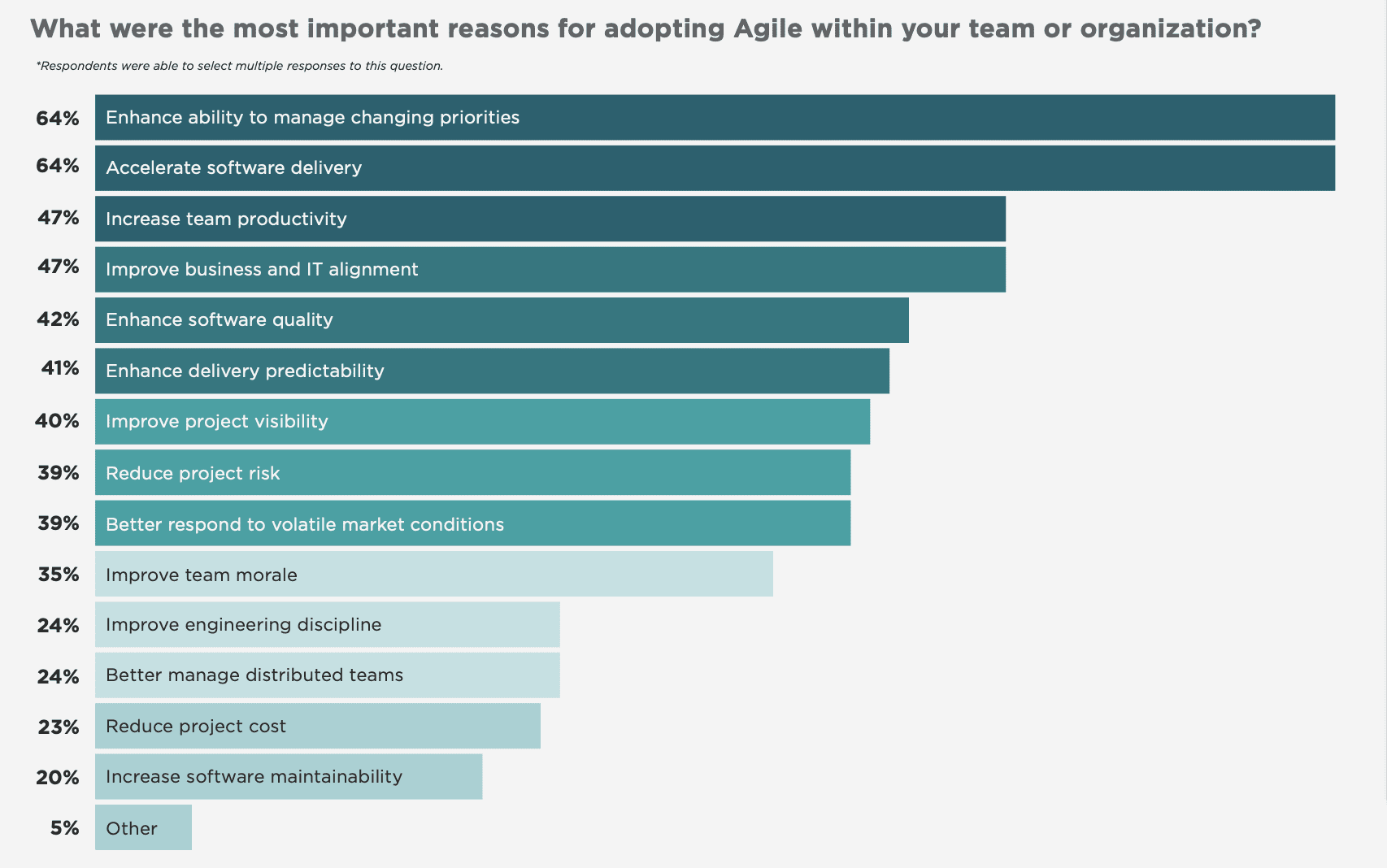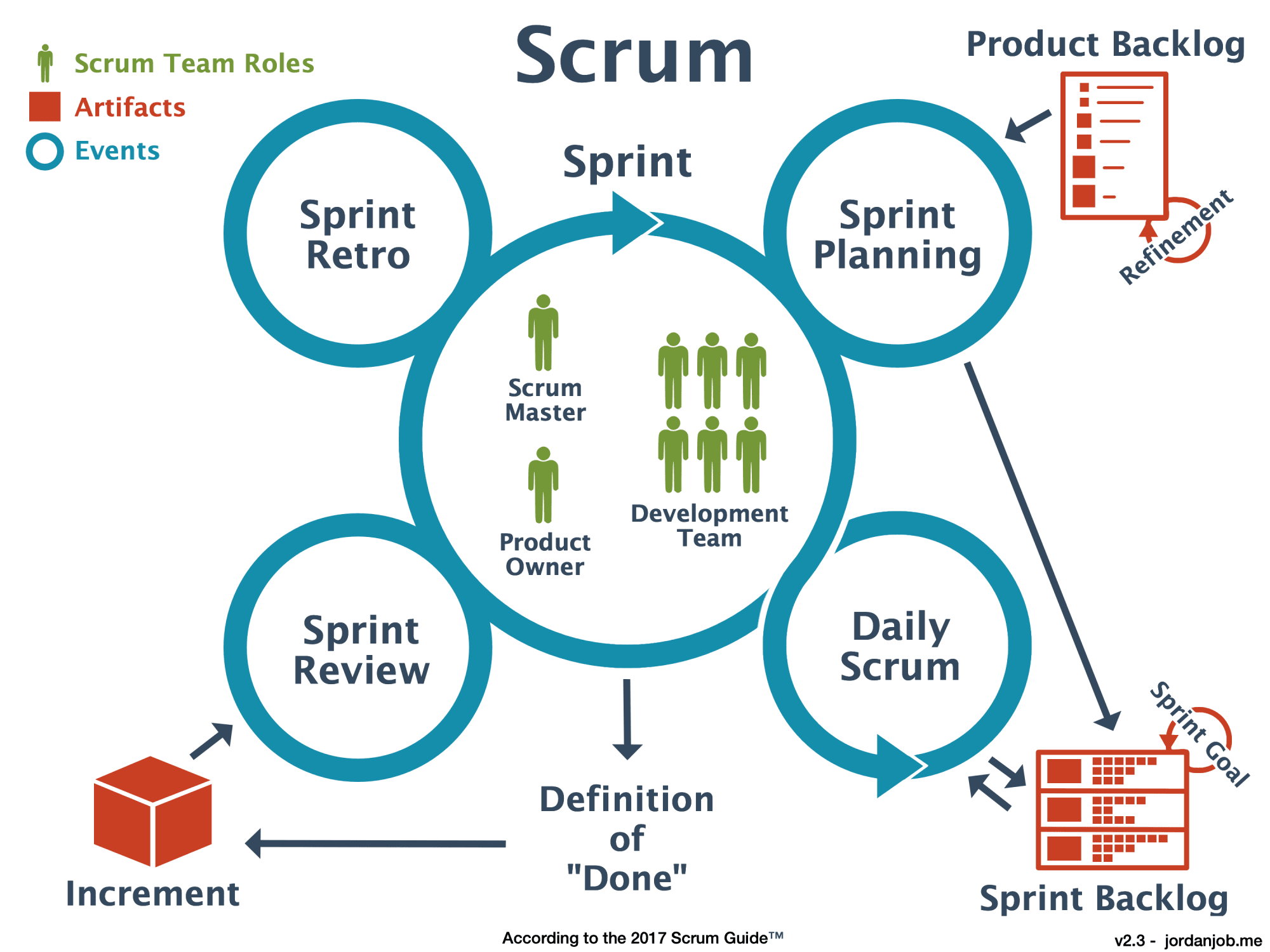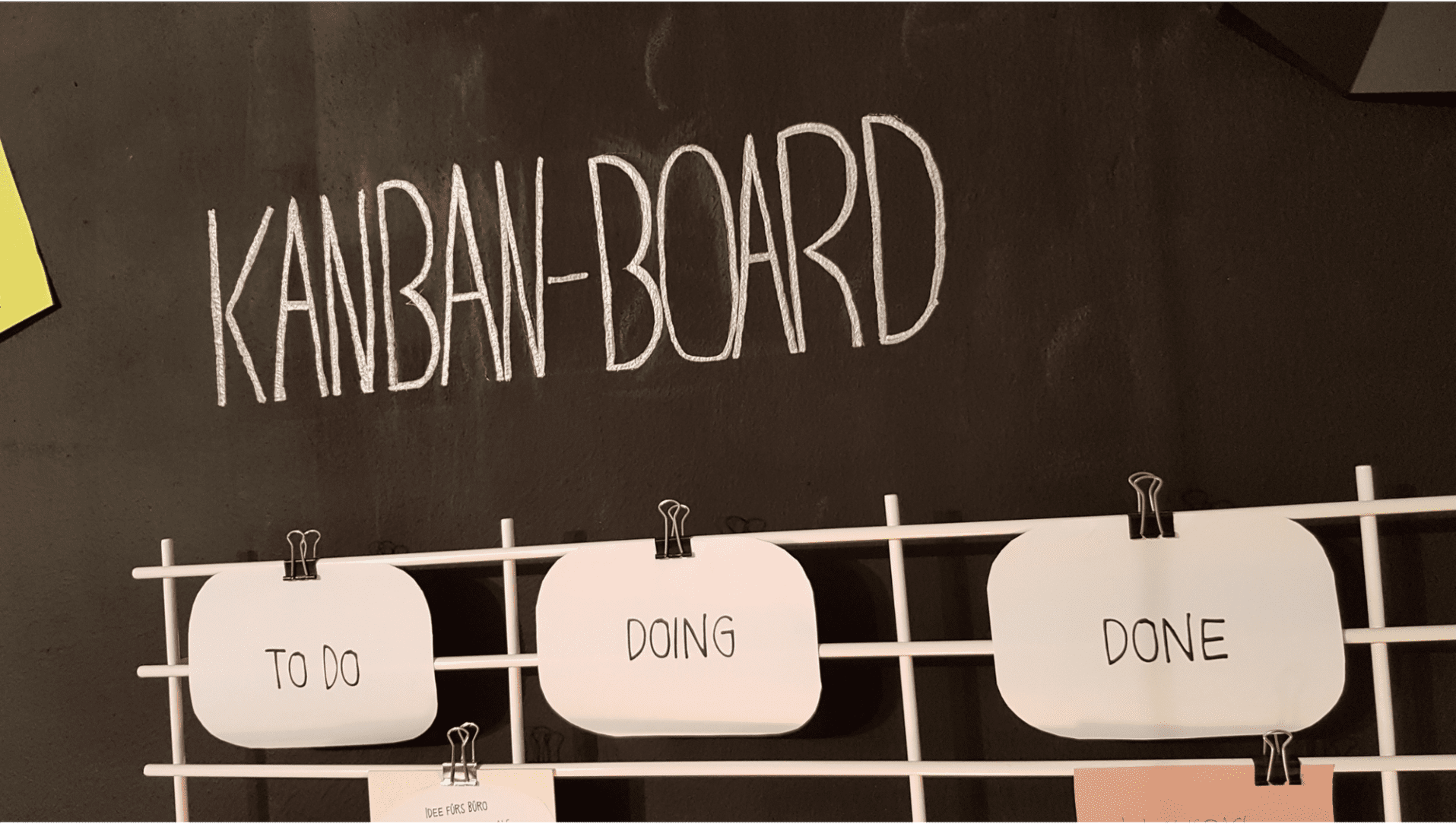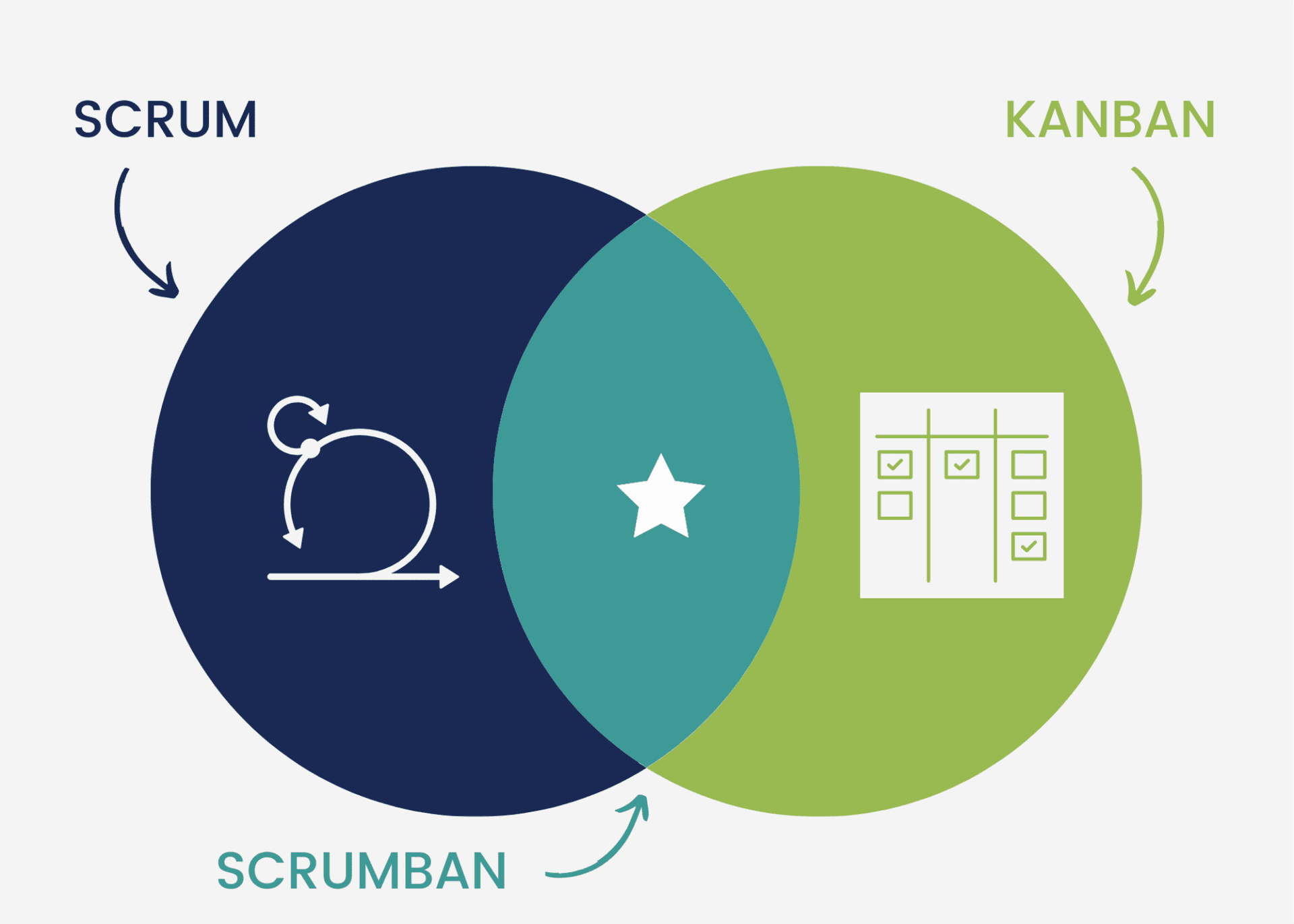The Top 3 Agile Frameworks for Professional Services Organizations
So, what is Agile?
In this article, we’ll be exploring the top three Agile frameworks, but first, what exactly is Agile? What started as a software development methodology created by a community of developers in 2001, Agile has grown to benefit teams in industries across the board.
The Agile methodology encompasses a collection of principles defined by The Agile Manifesto that inform and integrate with a set of frameworks and tools. It emerged as a response to the inadequacies of traditional software development methods, such as the Waterfall Method, and the need for an iterative process with an adaptive approach.
Agile empowers teams to respond quickly to change without risking an entire project. Collaboration, flexibility, and open communication are just a few of the core values of an agile team.
Agile methodology has never been more mainstream. According to the 15th State of Agile Report, there was significant growth in Agile adoption within software development teams, increasing from 37% in 2020 to 86% in 2021. Growth in non-IT lines of business also rose significantly, doubling in adoption since last year’s report.
Listed below are some of the most important reasons organizations decide to make the transition.

Graphic credit: 15th State of Agile Report
Which Agile framework suits your needs?
First, let’s look at Scrum
One of the most popular types of Agile methodology, Scrum, is known as The Art of Doing Twice the Work in Half the Time. The process comprises short sprints, defined as a duration of time usually as short as two weeks, and smaller deliverables. The Scrum project team includes uniquely defined roles (scrum master, product owner, and scrum team) and enables effective collaboration among individuals working on complex projects.

Graphic credit: Jordan Job
The advantages:
- Complex projects are broken down into more workable parts, allowing teams to accommodate changes quickly
- Regular Scrum meetings keep teams on the same page and ensure fewer surprises
- Active involvement from the client and stakeholders provides greater transparency and accountability for teams
The disadvantages:
- Frequent reviews and Scrum ceremonies can require substantial resources
- Without a defined deadline, scope creep can occur
- Prefers dedicated staffing model, does not work well for part-timers on the team
- Large teams need to scale Scum, which can be difficult
Let’s move on to Kanban
Kanban has its own defined set of principles and aims to help teams maximize efficiency by visualizing the workflow. The system uses boards with cards and columns to track work; this is helpful for teams that need transparency, as teams can share information visually and clearly.
Unlike Scrum, Kanban is not iterative. Tasks have no pre-determined duration. However, teams control their task capacity, meaning work items won’t move to the next stage until space is available. We call this Work-in-Progress (WIP) Limits, and it allows team members to approach the overall project in increments, concentrating on high priority tasks.
Kanban does not impose defined roles in how Scrum does, making it potentially more inviting to those used to more traditional development models.

The Four Principles of Kanban:
- Visualize Workflow
- Limit Work in Progress
- Focus on Flow
- Continuous Improvement
The advantages:
- Provides a clear status of current work
- Intuitive and easier to implement with teams
- As there are no set durations, there is greater adaptability
- Identifies bottlenecks that once addressed increases the team’s overall throughput
The disadvantages:
- Cluttered boards can cause confusion, with too many team members & tasks
- Task boards need to be kept up to date to avoid working off inaccurate information
- No defined durations can cause uncertainty
Finally, we have Scrumban
If you’ve been reading through this article, still unsure whether Scrum or Kanban is right for your organization, you may want to consider Scrumban. Scrumban combines the best practices of the two popular frameworks.

Similarities to Scrum:
- Utilizes a work cycle process, termed iterations
- Utilizes the product backlog approach
- Prescribes at least one Scrum ceremony – daily standups; others can be added
Similarities to Kanban:
- A Scrumban board is used to visualize tasks
- There is a work in progress (WIP) limit
- No limit on the number of team members
- Members can choose their tasks
- Utilizes continuous improvement
How Scrumban differs from both Scrum and Kanban:
- There are no required team roles
- Recommended iterations have a two-week maximum, unlike Scrum, where sprints last 1-4 weeks
- Utilizes bucket size planning, a long-term planning method where teams break tasks down into a three-month, six-month, or one-year bucket
Scrumban is an excellent choice for teams who need the structure of Scrum along with the flexibility of Kanban. However, there are a few pros and cons teams should consider.
The advantages:
- Good for large-scale projects with multiple features and tasks
- Easier to adopt than Scrum
- Team members are empowered to choose what they want to work on
The disadvantages:
- Not great for project managers who need more control
- Scrumban is a relatively new methodology, meaning there’s a lack of best practices
- Tracking progress could be difficult due to a lack of daily scrum meetings and reports
The key takeaway
The number of organizations adopting Agile grows substantially every year. Regardless of which framework you decide to move forward with, successful implementation will depend on the alignment of your entire organization throughout the process.
There is no single standardized approach to Agile that can work for an organization. The culture, current processes, constraints, and business goals should drive the methodologies that can provide success.
If your team needs the extra push to choose and adopt an agile methodology, needs coaching, or needs a complete transformation, Vytal Solutions’ certified experts can help you . We provide extensive federal government practical experience and proven success implementing agile methodology.
Vytal Solutions takes into account your specific environment, culture, constraints. We then work with you to determine what suits your needs. To get started and schedule a consultation, email sachin.mathur@vytalsolutions.com.
